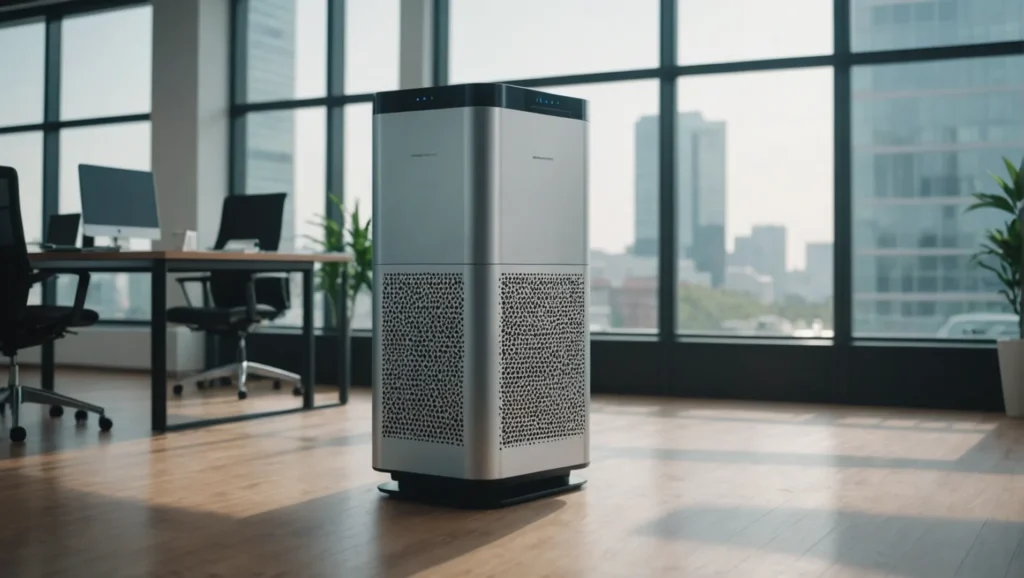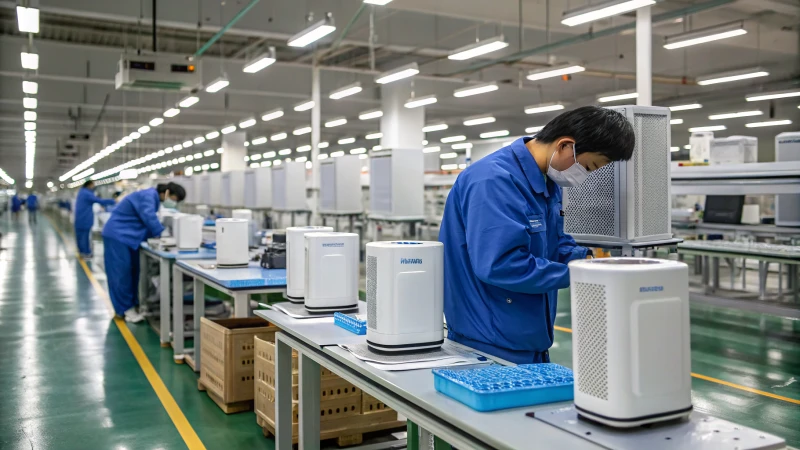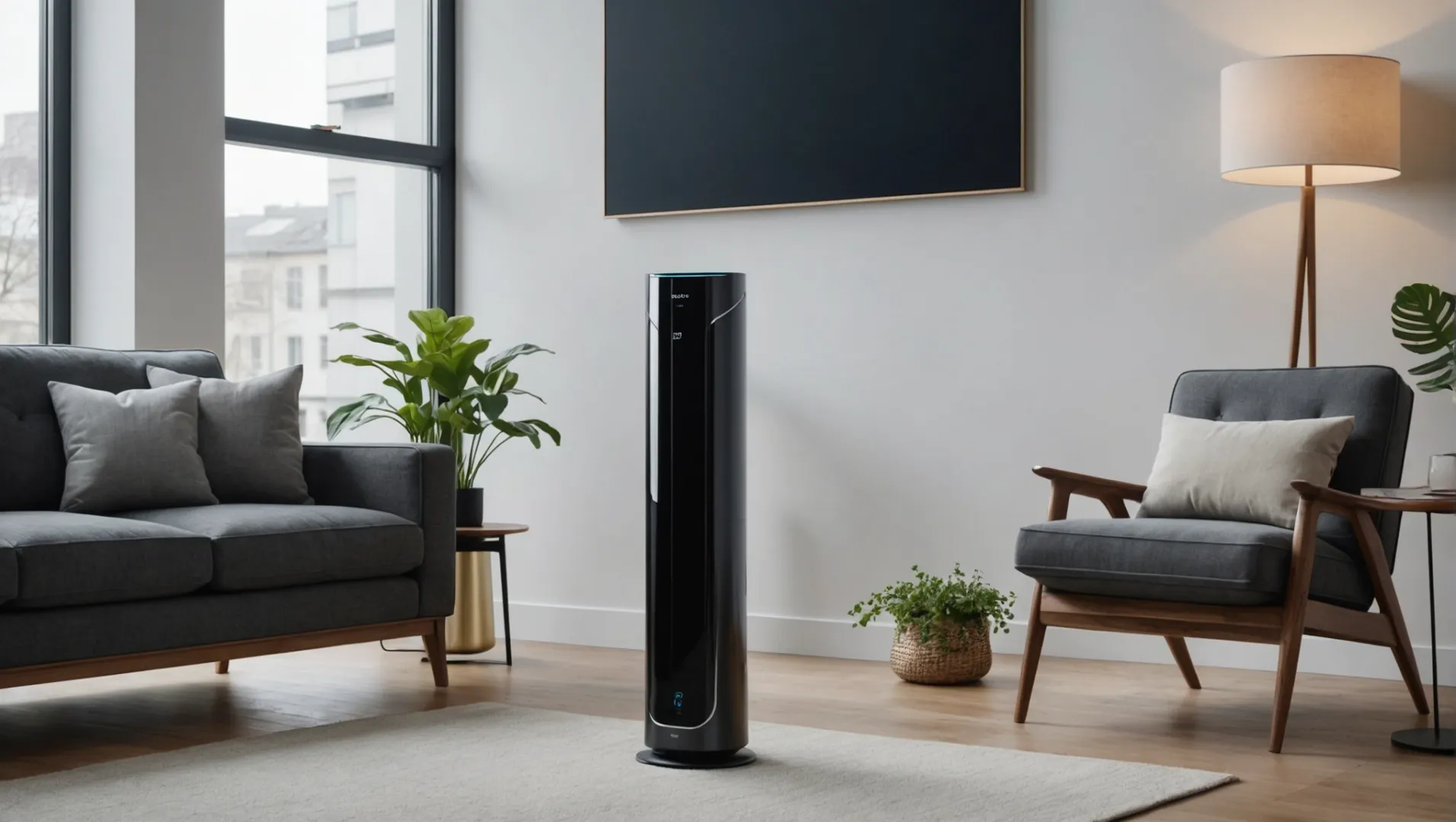
Picture stepping into your house and experiencing a quick feeling of freshness. That's the wonder IoT and AI introduce to air purifiers!
IoT and AI enhance air purifiers by enabling real-time monitoring, automated adjustments based on air quality data, and improved energy efficiency. These technologies ensure optimal air quality, providing a healthier and more comfortable living environment.
Everyone understands what a simple air purifier does. IoT and AI change everything. These exciting changes bring many new features. Modern air purifiers now work smarter than before.
IoT air purifiers offer real-time air quality monitoring.True
IoT technology allows constant observation and data gathering for air cleaners.
What Are the Key Features Enabled by IoT in Air Purifiers?
Discover how IoT connection changes air cleaners, improving their performance and ease of use.
IoT-enabled air purifiers feature real-time monitoring, remote control, energy optimization, and integration with other smart home systems, ensuring improved air quality and convenience.
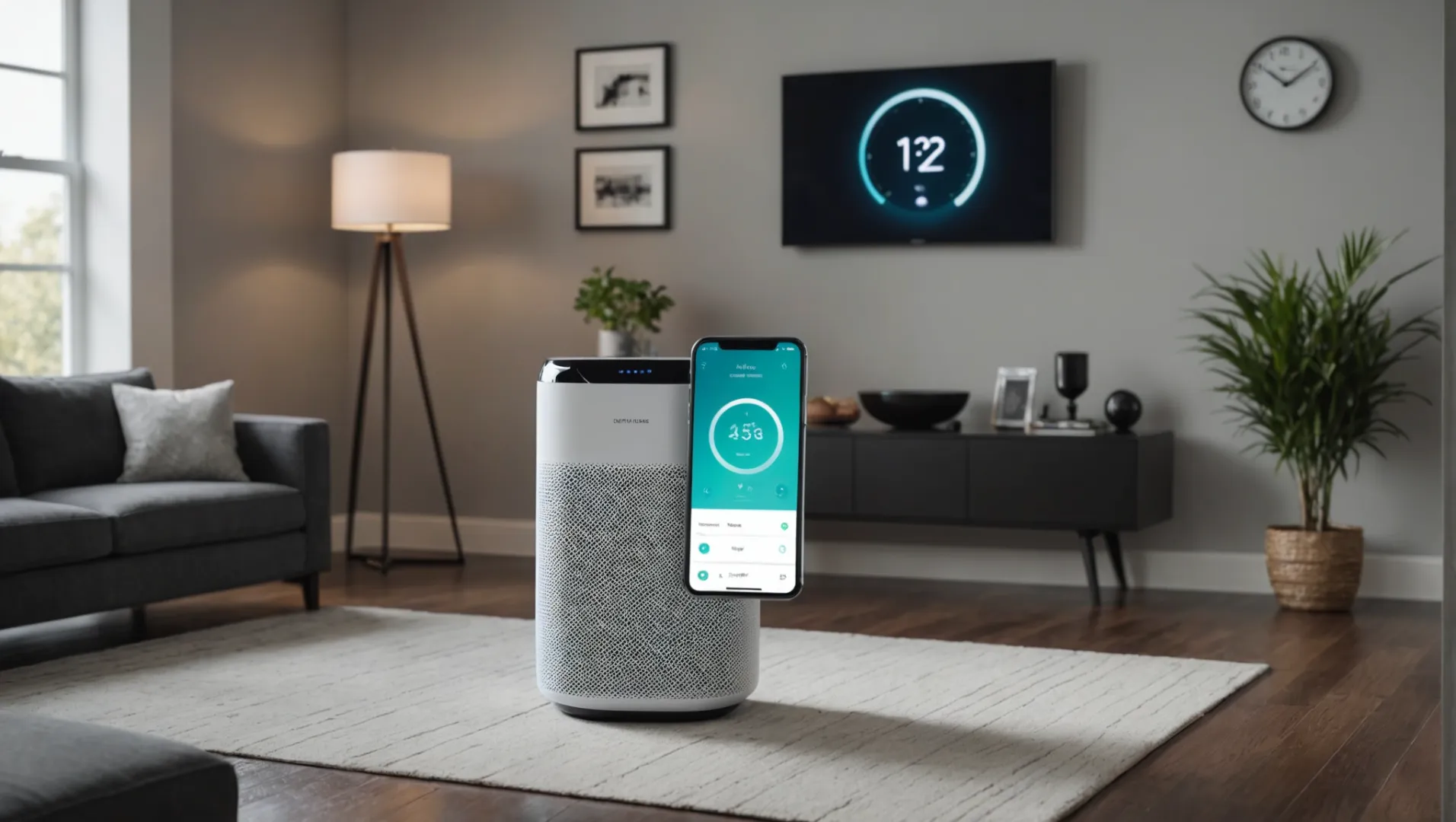
Continuous Air Quality Check and Information Gathering
IoT technology helps air purifiers watch air quality all the time and gather data over periods. This way, the machines study air condition trends and adjust themselves if needed. People observe detailed reports on their mobile phones or other gadgets, showing them details about pollutants in their surroundings.
Control from Far Away
A big advantage of IoT is control from distant places. People operate their air purifiers with mobile apps or online platforms from anywhere. This ability is useful for changing settings when not at home or for checking if air quality is good before arriving. It also allows for automatic changes based on personal schedules or likes.
Saving Energy and Money
IoT air purifiers lower energy use with smart actions. They employ sensors to identify when cleaning is needed, so they work only if necessary instead of running nonstop. This function protects energy, extends filter life, and reduces maintenance costs.
| Feature | Benefits |
|---|---|
| Continuous Checking | Offers nonstop air quality updates and understanding |
| Far Control | Lets control from any place for ease |
| Energy Saving | Cuts down on energy use and operation costs |
Easy Integration with Intelligent Home Systems
IoT air purifiers merge smoothly with other smart devices like thermostats, lighting, and voice systems. This link allows complete control over home surroundings, making it simple to keep ideal living conditions. For example, if pollution rises, the air purifier sends messages to the HVAC system to change ventilation as needed.
As IoT technology grows, more creative features in air purifiers are expected, improving our comfort and wellness.
IoT air purifiers offer real-time air quality monitoring.True
IoT technology offers nonstop air quality information.
Remote control of IoT air purifiers is not possible.False
Apps allow users to control purifiers from any location.
How Does AI Improve Air Quality Management?
AI changes the way we handle air quality by offering clever and more effective options.
AI improves air quality management through predictive analytics, automation, and real-time data processing, enhancing indoor and outdoor air environments.

Predictive Analytics and Real-Time Monitoring
Artificial Intelligence (AI) leverages predictive analytics to forecast air quality changes before they occur. By analyzing historical and real-time data, AI systems can anticipate pollution spikes or other changes in air quality. This allows for proactive measures, such as adjusting ventilation settings or alerting residents to close windows.
For example, in smart cities, sensors placed throughout urban areas collect data on pollutants. AI algorithms process this data to identify patterns and predict future air quality levels. Learn more about urban air quality monitoring1 to understand how cities are implementing these technologies.
Enhanced Air Purification Systems
AI-powered air purifiers automatically adjust their operation based on the detected air quality. These devices use machine learning to adapt to specific environments and user habits, improving efficiency and effectiveness. For instance, AI can optimize filtration speeds and power usage based on the time of day or occupancy levels.
In addition, AI can integrate with other smart home devices, creating a cohesive environment that responds dynamically to changing conditions. For example, when AI detects high levels of particulate matter, it might also dim lights or adjust the thermostat to maintain comfort while purifying the air.
Customized Air Quality Solutions
The integration of AI in air quality management enables personalized environmental control. AI systems can tailor air purification settings according to individual health needs, preferences, or activities. This customization extends beyond just purifying the air; it can include adjusting humidity, temperature, noise levels, and even light intensity.
By collecting data from users over time, AI can recommend personalized settings that promote wellness and comfort. Explore how personalized air purification works2 for a deeper insight into these advancements.
Integration with HVAC Systems
AI's role in air quality management is not limited to standalone purifiers. It also extends to HVAC systems within buildings and homes. AI algorithms optimize these systems' performance, ensuring they run efficiently while maintaining superior air quality.
By integrating with HVAC systems, AI enables a more comprehensive approach to managing indoor environments. It ensures optimal air quality without sacrificing energy efficiency or comfort. See how AI transforms HVAC systems3 for further details on these innovations.
AI can predict air quality changes before they occur.True
AI studies past and current data to predict shifts in air quality.
AI cannot integrate with HVAC systems for air quality.False
AI improves HVAC function, bettering indoor air quality effectively.
Why Is Real-Time Monitoring Important for Air Purifiers?
Real-time tracking in air purifiers allows quick reactions to changing air conditions, protecting wellness.
Real-time monitoring provides continuous feedback on air quality, allowing air purifiers to adjust settings automatically for optimal performance. This capability ensures a consistent and safe breathing environment, responding promptly to pollutants and allergens.
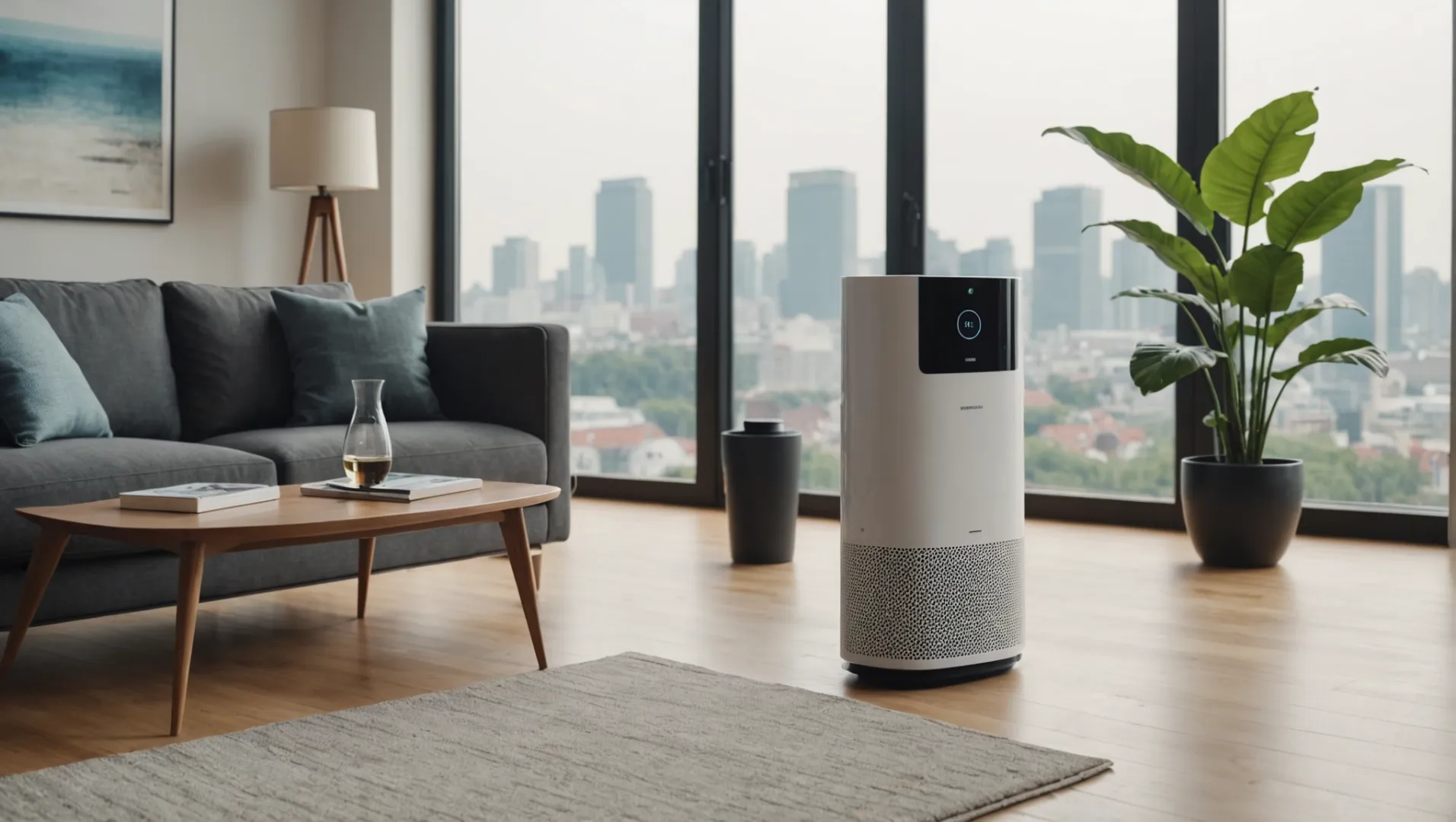
The Role of Immediate Observation
Instant observation transforms traditional air cleaners into active tools that react to changes in the air. By regularly checking indoor air quality, these tools ensure that pollutant levels4 are kept at safe levels and the air remains fresh. This is particularly beneficial in urban environments where air conditions can change rapidly due to external pollution sources.
Improving User Experience
Air cleaners with real-time checks often connect to smartphones, providing users with updates about home air quality. This feature not only informs users but also allows them to control the device remotely, offering convenience and peace of mind. For example, if air conditions worsen due to cooking smoke, users receive alerts quickly and can respond even when they are not at home.
Automation and Energy Savings
Immediate checks help air cleaners operate more efficiently. They adjust their activity based on current air quality data, using more power when pollution levels rise and less when the air is fresher. This ensures a cleaner environment while saving electricity, as the device does not overwork unnecessarily.
| Feature | Benefit |
|---|---|
| Ongoing Feedback | Keeps air quality at optimal levels |
| Distant Monitoring | Offers management from any location |
| Self-Adjustments | Supports energy savings |
Connection with Smart Home Systems
As part of smart home setups, immediate observation enables air cleaners to communicate with other devices, creating a unified environment. For instance, if a sensor detects high carbon dioxide levels, it might activate a fan for increased airflow or adjust a smart climate controller for comfort. This integration is expected to become smoother with technologies like Matter5, allowing different branded devices to cooperate easily.
The future suggests even sharper real-time observing capabilities, with smart systems tailoring air cleaning based on personal preferences and health needs. As these technologies improve, the role of immediate observation in ensuring both effectiveness and well-being will likely grow larger.
Real-time monitoring adjusts air purifiers automatically.True
Real-time observation lets air purifiers adjust settings according to air quality.
Air purifiers with real-time monitoring save energy.True
They modify activities depending on air quality, lowering unneeded energy consumption.
How Will Future Innovations Transform Air Purifiers?
Upcoming advances in air clean-up technology promise to blend smoothly into our routines, reshaping the air we breathe inside.
Upcoming innovations in air purifiers will focus on integration with smart home systems, AI-driven personalization, and invisible designs that blend with HVAC systems, enhancing air quality management.
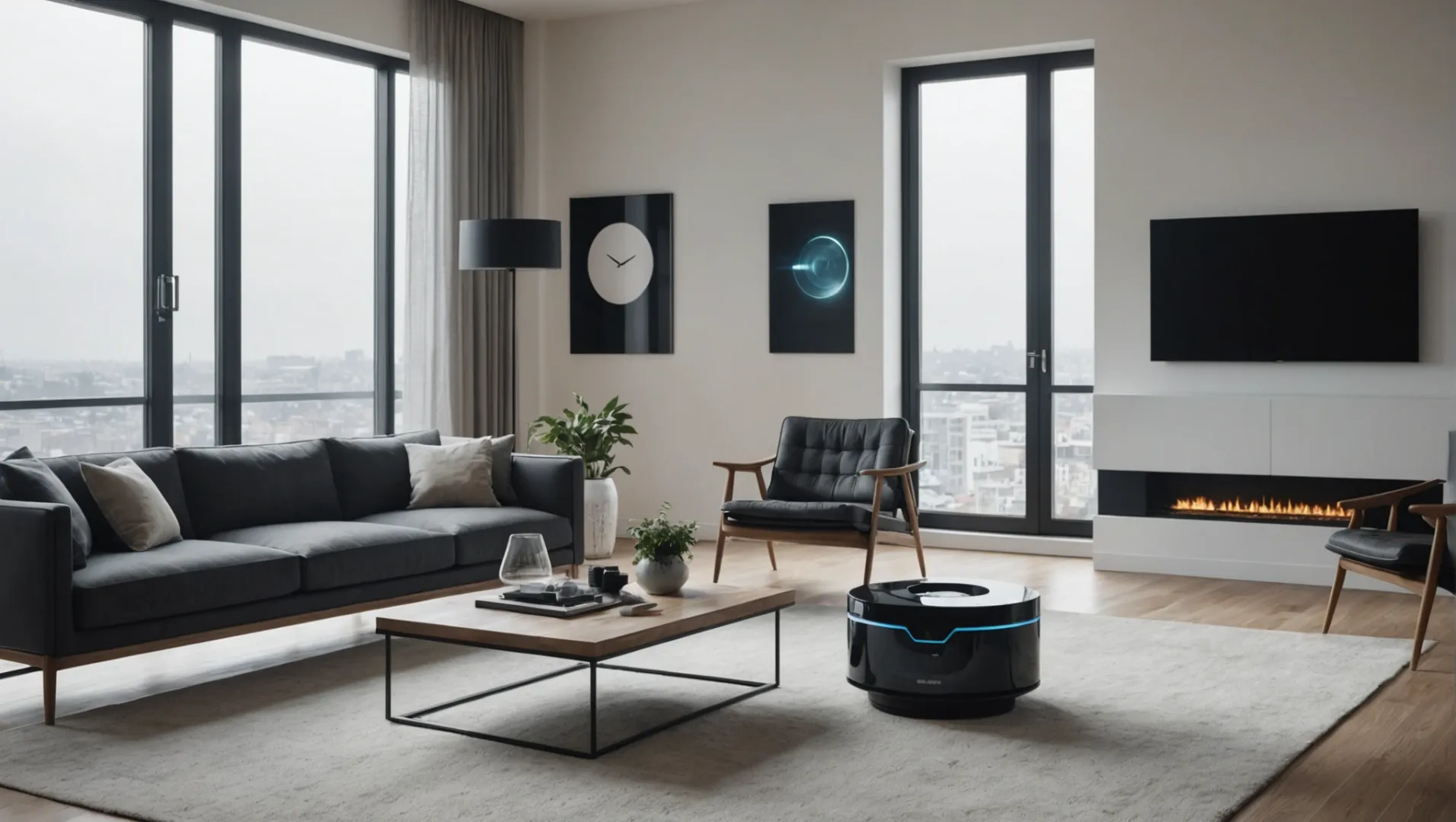
Integration with Smart Home Systems
In the next few years, air purifiers are expected to join smart home systems using setups like Matter. This setup permits seamless communication between gadgets from various brands, ensuring that your air purifier can interact with lights, thermostats, and security devices. For example, a purifier might automatically adjust its settings based on temperature and humidity levels detected by a thermostat, enhancing indoor comfort.
AI-Driven Customization
Artificial Intelligence (AI) promises to bring a new element of customization to air cleansing. By observing user actions and preferences, AI systems can adapt air quality settings to personal needs. This involves adjusting humidity, temperature, noise levels, light intensity, and even oxygen concentration to create a personalized wellness setting. Imagine a purifier that not only cleans the air but also sets the optimal mood for work or rest.
Hidden Air Cleaning
Future air purifiers might stop being standalone units and could become integrated parts of HVAC systems and building designs. These changes aim to keep air cleaning "hidden," providing cleaner air without occupying space or disrupting the room's aesthetic. By becoming part of the building's fabric, these systems offer continuous air quality control throughout all areas.
Advanced Data Understanding and Monitoring
With advancements in IoT and AI, upcoming air purifiers could provide enhanced data understanding capabilities. Real-time tracking and alerts for early maintenance might become standard features, helping users manage their indoor air quality proactively. This can include notifications when filters need changing or when unusual air quality patterns are detected.
These innovations6 are poised to change how we perceive and use air purifiers, turning them into vital components of a smart, healthy home.
Air purifiers will integrate with smart home systems.True
Future air purifiers might link with smart home systems such as Matter.
AI will not influence air purifier settings.False
AI probably customizes air cleaning according to user choices.
Conclusion
IoT and AI are changing how air stays clean. Accept these improvements for a very healthy living space.
-
Discover how cities utilize AI for air quality monitoring.: CALIOPE-Urban combines the technology of the CALIOPE regional model, the BSC air quality prediction system, with an urban model that considers ... ↩
-
Understand AI's role in customizing air purification.: AI Powered Air Monitoring | Rapid Air Cleaning | Game Changing Expandable System | Low Maintenance | Fragrance Mode | IoT & Free App. ↩
-
Learn about AI's impact on HVAC system efficiency.: AI brings remarkable advancements to HVAC systems. The advancements include intelligent data analysis, predictive maintenance, energy optimization, fault ... ↩
-
Explore how real-time pollution monitoring enhances health and safety.: Air quality monitoring is an important tool for improving air quality, protecting public health, and ensuring compliance with regulations. ↩
-
Discover how Matter connects smart home devices seamlessly.: Matter casting enables you to cast content from supported smartphone apps to TVs or smart displays, though Amazon seems to be the only company ... ↩
-
Discover cutting-edge developments shaping next-gen air purification technology.: One of these innovations is UVGI air purification technology. UVGI stands for Ultraviolet Germicidal Irradiation and is also known as ... ↩


